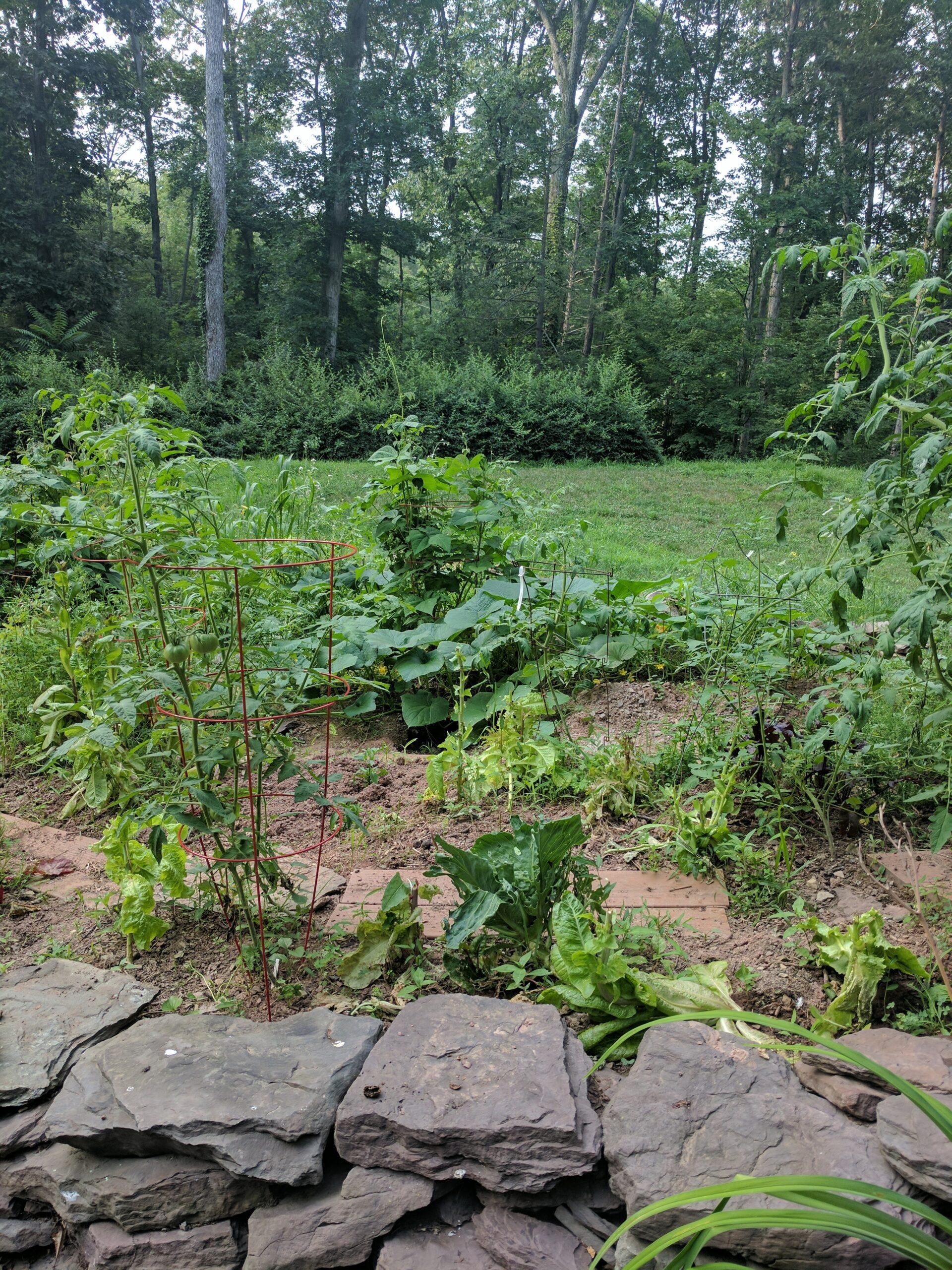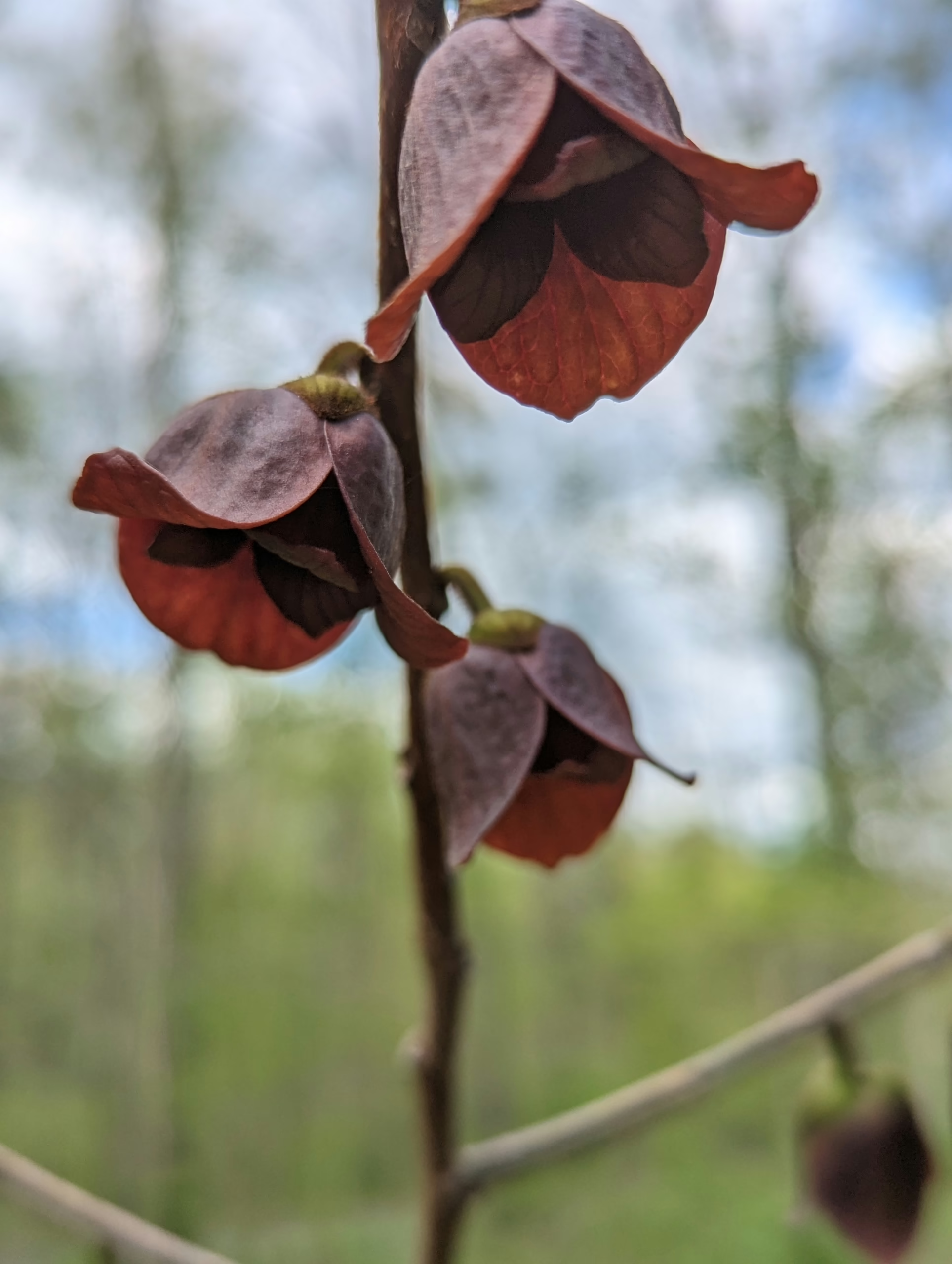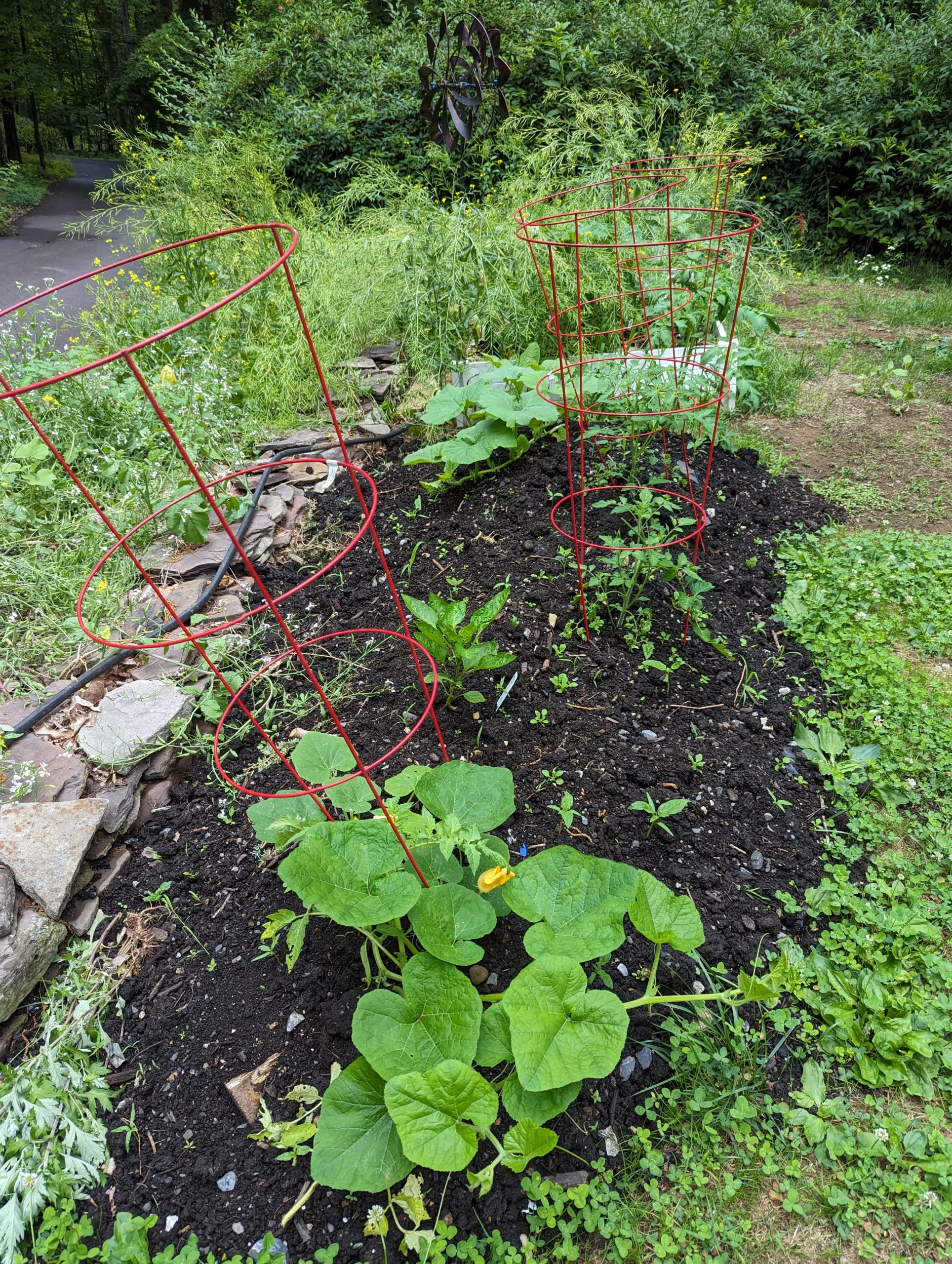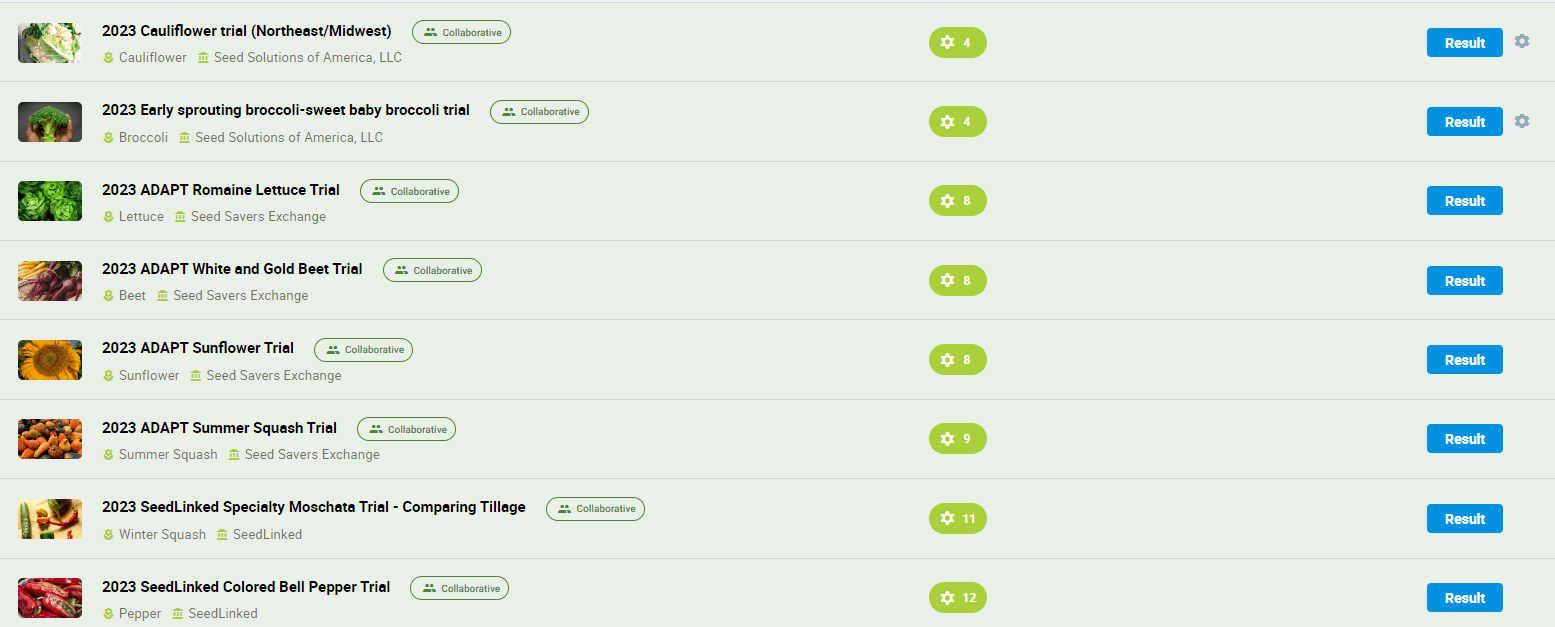I’ve written before about my desire to turn my backyard into a food forest using edible landscaping. I’ve always imagined a lush, thriving garden that requires minimal effort yet provides a bounty of products—all while resembling a natural forest ecosystem. My process of building a backyard food forest started after encountering the concept of permaculture. Rooted in ecological principles, permaculture is a holistic approach to creating sustainable systems that mimic nature’s patterns. Unlike traditional gardens, it’s designed to work with nature, reducing labor and water needs over time.
What Is Permaculture?
Coined in the 1970s by Bill Mollison and David Holmgren, permaculture combines the words permanent and agriculture (or culture). It’s a design philosophy focused on creating resilient, self-sustaining ecosystems that benefit both humans and the planet. Unlike conventional gardening or farming, permaculture emphasizes:
- Working with nature, not against it.
- Creating no waste—everything has a purpose.
- Building soil health as the foundation of all life.
- Ethical stewardship of resources for future generations.
In the Mid-Atlantic region, where seasons shift from humid summers to crisp winters, permaculture offers practical solutions to thrive in harmony with local climate, soil, and wildlife.
Core Principles of Permaculture
Before diving into how I’ve put things into practice, let’s explore three foundational principles:
- Observe and Interact: Study your land’s microclimates, water flow, and sunlight patterns. Factor this information into your design plans for making the most of your unique situation.
- Catch and Store Energy: Harvest rainwater, sunlight, and organic matter to reduce reliance on external resources.
- Produce No Waste: Compost scraps, recycle materials, and design systems where one element’s “waste” becomes another’s resource.
Key Permaculture Practices
There are some key practices that you must ultimately master in order to make the most of permaculture. The specifics of these will vary wildly based on the region of the world you are in. This is why observation is the first step to build your backyard food forest.
Companion Planting
Pair plants that support each other’s growth. Practices like three sisters gardening (corn, beans, and squash) thrive for a reason, as beans fix nitrogen, corn provides structure, and squash shades the soil. One of my favorite books on companion planting is Carrots Love Tomatoes
Integrate Native Plants
Start with plants that are native to your area. These are already adapted to the specifics of your climate and will support local pollinators. This can help minimize the need to heavily amend your soil and manually water everything.
Rainwater Harvesting
Take advantage of any water that falls on your property. Install barrels, swales, or ponds to store water for dry spells. Use this as the basis for any watering system you develop.
Leverage Perennials
Replace annual crops that you need to plant every year with perennial plants that yield food for years. Blueberries, asparagus, garlic, hazelnuts, and fruit trees like pawpaws are Mid-Atlantic favorites.
Master Mulching
Rebuild soil health by layering cardboard, compost, and mulch. This mimics natural leaf litter, suppressing weeds and enriching soil. Perfect for reclaiming lawns or garden beds.
Natural Pest Management
Encourage biodiversity to control pests. Ladybugs, birds, and even chickens can keep aphids and slugs in check. Avoid synthetic pesticides that harm beneficial insects.
Starting Your Mid-Atlantic Permaculture Journey
Start Small
Many newcomers to permaculture are immediately overwhelmed. Building a backyard food forest is a marathon, not a sprint. Do small things to help learn your land while still giving you some ‘rewards’. Begin with a balcony herb garden or a rain barrel. You’re experimenting with ideas at this point.
Learn Local
Read about the core principles, specifically things that are targeted at the region that you live. Befriend a long time gardener. Attend workshops or join groups. A good resource for the Mid-Atlantic is the Shenandoah Permaculture Institute.
Assess Your Site
Now that you’re armed with some basic knowledge and have some skin in the game with a small garden plot, start in earnest by observing your space:
- Sunlight: Note how sunlight moves across your yard throughout the day. Most fruit trees and shrubs need 6–8 hours of sun, while shade-tolerant plants (e.g., leafy greens) can thrive in partial shade.
- Soil: Test soil pH and fertility. Identify areas with poor soil that you may need to amend with compost or mulch.
- Water: Identify natural water flow and areas prone to pooling.
- Space: Sketch your yard’s dimensions and existing features (trees, structures) to assist in planning layers effectively.
Identify Plants
A forest has distinct layers—replicate them with edible or useful species that are of interest to you. Avoid invasive species for your area and instead, prioritize native or climate-adapted species—they require less water and resist local pests.
- Canopy Layer: Tall fruit or nut trees (e.g., apple, pear, chestnut, or persimmon). Space them to allow sunlight to reach lower layers.
- Understory Layer: Dwarf fruit trees or berry bushes (e.g., blueberries, currants, or hazelnuts).
- Shrub Layer: Edible flowers, herbs, or smaller shrubs (e.g., rosemary, elderberry, or serviceberry).
- Herbaceous Layer: Perennial vegetables and herbs (e.g., rhubarb, sorrel, chamomile, or comfrey).
- Ground Cover: Low-growing plants that suppress weeds and retain moisture (e.g., clover, strawberries, or thyme).
- Root Layer: Tubers or bulbs (e.g., Jerusalem artichokes, garlic, or onions) to maximize vertical space.
Design the Layout
- Sunlight Flow: Place taller plants (canopy) on the north or east side to avoid shading smaller species.
- Companion Planting: Pair plants that benefit each other. For example, nitrogen-fixing legumes (clover) enrich soil for fruit trees, while marigolds deter pests.
- Biodiversity: Mix species to prevent monoculture and attract pollinators (bees, butterflies) and pest predators (ladybugs, birds).
Prepare the Soil
- Mulch Heavily: Use wood chips, straw, or leaf litter to retain moisture, suppress weeds, and feed soil as they decompose. If you have access to lots of tree litter, consider creating Hügelkultur beds.
- Add Compost: Layer compost over the soil to improve fertility and structure.
- Avoid Tillage: Tilling disrupts soil ecosystems. Let fallen leaves and mulch act as natural mulch.
Plant Strategically
- Spacing: Allow room for mature plant sizes. Overcrowding leads to competition for light and nutrients.
- Layer Planting: Start with canopy trees, then fill in understory and ground covers. Plant root crops first to avoid disturbing them later.
- Seasonal Timing: Plant perennials in early spring or fall when they establish roots easily.
Minimize Maintenance Practices
- Mulch Annually: Replenish mulch to maintain soil health and reduce weeding.
- Weed Sparingly: Pull weeds when young, but embrace some diversity—many “weeds” (like dandelions) are edible or otherwise beneficial.
- Prune Selectively: Remove dead branches from trees but avoid over-pruning. Let fallen leaves and debris stay as natural mulch.
- Water Sparingly: Once established, most perennials need little irrigation. Focus on young plants during dry spells.
Integrate Wildlife
- Pollinators: Plant flowers like lavender or echinacea to attract bees and butterflies.
- Birds: Add a birdbath or nesting boxes to control pests like aphids. Many fans of permaculture will create mobile chicken coops to assist with this.
- Compost: Compost kitchen scraps and any other woodland debris to recycle nutrients back into the soil.
Harvest and Reevaluate
- Pick Regularly: Harvest fruits and herbs to encourage growth and prevent waste.
- Replace Slowly: If a plant dies or struggles, analyze potential reasons for this and replace it with another species suited to the space.
Why Permaculture Matters
Almost every region faces challenges like soil erosion, invasive species, and erratic weather. Permaculture helps address these by:
- Building drought-resistant landscapes with deep-rooted plants.
- Reducing stormwater runoff through swales and rain gardens.
- Supporting pollinators critical to local agriculture.
A food forest is a long-term investment that grows more resilient and productive with time. Permaculture isn’t about perfection—it’s about making steady progress. Every step brings you closer to a sustainable future. The Mid-Atlantic’s rich biodiversity and distinct seasons make it an ideal place to experiment with these timeless practices. By mimicking nature’s design, you’ll eventually create a low-effort, abundant ecosystem that nourishes both you and the planet.



